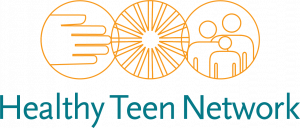What is an evidence-based intervention (also known as evidence-based program) anyway? You may know the definition—a specific kind of programming that has been evaluated to show behavior change—but what does that really mean? Evidence-based interventions and programs can expand or strengthen the programming you deliver in your community. Explore what evidence-based interventions are, what makes them different from other kinds of programs, and learn some of the basics for using evidence-based interventions effectively. Complete this course at your own pace.
Training Hub
The Sex Education Collaborative Training Hub lists trainings for sex educators, facilitators, and other professionals on best practices for sharing important information with clients and the public. From teaching anatomy inclusively to effectively addressing bias in the classroom to addressing racial justice and equity in sex education, the Training Hub includes trainings, technical assistance, and policy support from state, regional, and national leaders in the field of sex education.
Please note: The Training Hub includes both in-person and online professional trainings. If you see a training you are interested in and it isn’t listed as virtual, please reach out directly to any of our members to find out what's possible!
Trainings Offered by State-Based and National Organizations
Displaying results 106 - 110 of 137Evidence-Based Interventions
- Indicator 1 (K-12): Describe three health (e.g. physical, social and/or emotional) and/or academic benefits of sex education for young people
Understanding the Adolescent Brain
During this session, participants will learn about neuro-biological findings from adolescent brain research as they apply to cognitive and behavioral changes, such as risk taking, relationship building and social development. The facilitators will describe findings in emerging fields informed by neuroscience, such as the effects of sleep, technology and stress on the developing brain. Based on the findings outlined, participants will explore some unique teaching and learning strategies for reaching adolescents, all linked to cognitive engagement, impulse control, and decision making. They will identify a set of adult behaviors and attitudes that might best engage, influence, and motivate teens, and are strongly encouraged to make a shift in how they think about and approach the adolescent learner.
Objectives of this course:
- Describe the unique developmental features of the adolescent brain and the implications for adolescent cognition and behavior.
- Describe current research on factors that influence the developing adolescent brain, including sleep, substances, stress, and technology.
- Identify strategies that draw upon brain research to engage the adolescent learner in avoiding risk behaviors.
- Implement a personal plan of action for refining their skills in effectively engaging adolescent learners.
Visit ETR's Training & TA Form to submit your request and receive cost information.
- Indicator 2 (K-12): Demonstrate three student-centered instructional approaches that support a variety of learning styles. (S)
- Indicator 5 (K-12): Describe three effective strategies for practicing skills with students.
- Indicator 7 (K-12): Demonstrate the ability to analyze and tailor lesson plans to match the age, developmental stages, cultural backgrounds, and other identities of students. (S)
- Indicator 2 (K-12): List three physical, three social, and three emotional changes that occur during puberty.
Virtual PD - Using Medically Accurate Terms When Teaching Sex Education
Virtual Professional Development is a simulated classroom where teachers can practice teaching student avatars using short scenarios and support from an instructional coach, so they can quickly learn and master the skills they most need to be effective. With upper elementary, middle and high school classrooms, Virtual PD has scenarios for teachers of all grade levels across a wide range of topics aligned with the Professional Learning Standards for Sex Education (PLSSE). You can watch the video here (link is external) to learn more about Virtual PD.
Using the Virtual Professional Development classroom simulator, the educator will practice Using Medically Accurate Terms When Teaching Sex Education with the student avatars. In this scenario, the educator will soon be starting a unit on puberty with their students. One of the points they want to stress with their students is the importance of using medically accurate names for body parts, including reproductive anatomy and external genitalia. In this simulation with five students, the participant will need to demonstrate the ability to use medically accurate terms and explain the benefits of teaching these to students.
- Indicator 2 (K-12): Demonstrate the ability to use medically accurate terms for sexual and reproductive anatomy, including all external genitals. (S)
SIECUS is well poised to provide policy support as we are the only organization whose sole mission is to advance sex education policy at the federal, state, and local levels. For the past 55 years, SIECUS has advocated for the rights of all people to comprehensive sexuality education, and the full spectrum of sexual and reproductive health services. SIECUS is more committed than ever to the fight for the equitable provision of comprehensive sexuality information to vulnerable and marginalized populations especially people of color and LGBTQI identifying youth—and for the elimination of all barriers to access to quality reproductive health services, for reproductive justice to be actualized.
SIECUS equips state and local leaders with the knowledge they need to be confident and powerful advocates. Our staff conduct workshops and trainings around the country and provide one-on-one technical assistance by phone and email. Our policy support helps state and local leaders become stronger advocates for their missions and empowers them to addresses the root cause of key reproductive justice and sexual rights issues, moving us toward a society where issues like gender equity, sexual and reproductive health, racial justice, LGBTQ inclusion, consent, personal safety, and autonomy are well—established as part of our normal reality. Our website is a place where advocates can search our robust collection of toolkits, fact sheets, reports, and our signature report, the SIECUS State Profiles, as well as connect with a team member for one-on-one technical assistance.
Healthy Teen Network customizes techincal assistance and support to meet your unique needs.
Areas of expertise span a wide range of topics across adolescent sexual and reproductive health, evidence-based approaches, curricula, working with diverse youth, training adult professionals, innovation and research, human-centered design, advocacy and public policy, strategic planning, sustainability, and more.
Additional Trainings offered by out-of-state organizations
- ‹ previous
- 48 of 49
- next ›
What’s Triggering Our Teens? Intimate Partner Violence Edition
Participants will gain knowledge of how intimate partner violence impacts the mental, sexual and reproductive health of young people who witness and/or experience it. Participants will brainstorm strategies to intervene and learn about local, state, and national resources.
This training is designed for:
- Educators
- Teachers
- Substitute Teachers
- Counselors
- Coaches
- Parents
- Clergy
- Community Workers
- Healthcare Providers
- Healthcare Staff
- Clinicians
- Indicator 1 (K-12): Describe three distinguishing characteristics between healthy and unhealthy relationships, involving family, friends, and/or romantic partners.
- Indicator 2 (K-12): Explain three ways that healthy relationships can positively impact personal well-being.
- Indicator 5 (K-12): Describe three ways to help students set and respect personal boundaries in relationships.




